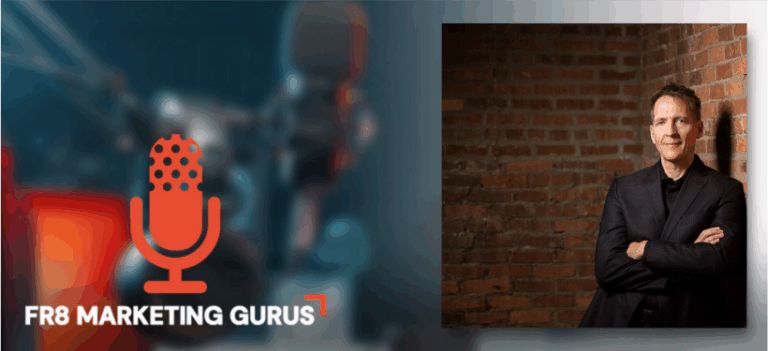Marketing and Magic: Creating Connection Through Storytelling
In an era where artificial intelligence threatens to make marketing feel increasingly automated and impersonal, one marketing executive is drawing from an unexpected source to keep the human connection alive: magic. Jimmy Gibson, VP of Brand Communication at Thrive Agency, has spent his career weaving together two seemingly different worlds—marketing strategy and stage magic—to create what he calls the "Magic Script," a framework that transforms how businesses connect with their audiences.

The Evolution of Marketing: From Mad Men to AI
Gibson’s journey through the marketing landscape reads like a history of the industry itself. Starting in the traditional “Mad Men” era where communication was dominated by newspapers, magazines, radio, and TV spots, he witnessed the digital revolution firsthand. “When I came out of college, computers were just being used in marketing,” Gibson recalls. “They were still using typesetting machines that would run out galleys, and you had to wax the back of them, paste them down on a board, take a picture of them.”
The transition wasn’t immediate. As Gibson notes, many of his colleagues initially resisted the computer revolution, with some declaring that “the computer is never going to last.” Those who failed to adapt became industry dinosaurs—a pattern Gibson sees repeating today with artificial intelligence.
We’ve moved through distinct marketing eras: from traditional print and broadcast media to the content marketing boom where every company became a content production company, churning out white papers, gated downloads, and email campaigns. Now, we’re entering what many consider the personal brand era, where authentic human connection cuts through the AI-generated noise.
The Personal Brand Renaissance
“I personally feel like we are in the personal brand era,” explains podcast host Jennie Malafarina during her conversation with Gibson. This shift isn’t just about B2C companies—B2B organizations are increasingly recognizing that people connect with people, not logos.
Gibson has seen this transformation firsthand with his clients. He shares the story of a franchise organization that hired a new CMO whose first initiative was creating a personal branding playbook for all individual owners and executives. The reason? “When executives step out from behind the logo and speak into their local community, their referrals can increase by 30%.”
This statistic isn’t just impressive—it’s revolutionary. In a world where consumers are bombarded with automated messages and AI-generated content, authentic personal connections have become premium currency.
The Magic Script: A Framework for Connection
Drawing from his lifelong passion for magic, Gibson developed the Magic Script, a framework based on the structure of a magic trick. Every magic performance follows three distinct phases: Connection, Curiosity, and Conversion—a pattern that mirrors effective marketing communication.
Connection: The Oxytocin Release
The connection phase releases oxytocin, the neurotransmitter associated with bonding and trust. In marketing terms, this means understanding your audience deeply enough that they feel you’re “in their head.” Gibson illustrates this with a logistics industry example:
“You shouldn’t have to wake up wondering where your freight is or if it’s even going to arrive on time. If your day is full of checking emails and your spreadsheets are older than your coffee, it’s time for a new playbook.”
This approach immediately resonates because it addresses real pain points that the audience experiences daily.
Curiosity: The Dopamine Hook
The curiosity phase triggers dopamine release—the same neurotransmitter that makes social media addictive. But unlike social media’s quick hits, effective marketing curiosity creates a loop that requires closure. Gibson continues the logistics example:
“Our clients don’t just check in—they get updates before they even ask. Our platform flags potential delays before they can derail your day. It’s like having a personal dispatcher who sees the future.”
This phase maintains engagement while building toward resolution.
Conversion: The Serotonin Payoff
The conversion phase delivers serotonin, creating that “everything’s right with the world” feeling. It’s the magical reveal, the “aha” moment, the clear next step that feels natural and satisfying.
Demonstrating the Magic
During their conversation, Gibson demonstrated this framework with an impromptu magic trick that took Malafarina on a journey through her neighborhood, ultimately revealing her subconsciously selected card—the ace of diamonds. The trick wasn’t just about the reveal; it was about the story, the journey, and the emotional connection created along the way.
“That’s how our marketing should be,” Gibson explains. “We’ve lost that magic. We’ve lost that wow factor.”
The trick worked because it followed the Magic Script perfectly: establishing connection through personal details about Malafarina’s life, building curiosity through an engaging story, and delivering a satisfying conversion with the card reveal.
The AI Challenge and Opportunity
While AI has revolutionized many aspects of marketing—from automation to data analysis—Gibson warns against using it as an “easy button” for content creation. The risk is creating content that sounds “plastic” and lacks the human touch that creates genuine connection.
“If you hit the easy button on ChatGPT to write a blog post for you, infuse your personality,” Gibson advises. “Because people are going to be attracted to authenticity. If you’re passionate about something, it’s infectious.”
This doesn’t mean rejecting AI entirely. Gibson and his team use AI for research, outlines, editing, and automation of repetitive tasks. The key is maintaining human oversight and ensuring that personality and authenticity shine through in the final product.
The Power of Story and Experience
Gibson’s magic trick demonstration revealed something crucial about modern marketing: people don’t just want information—they want experiences. As Malafarina noted after the trick, “I love the journey that we went on to get there. It wasn’t just like, ‘Hey, pick a card. Oh, there it is.’ It was a whole journey, a whole story, and it was captivating and engaging.”
This insight is particularly relevant in our current landscape. With everyone creating content and blasting audiences with information, the brands that create memorable experiences will stand out. Whether it’s through storytelling, interactive content, or unexpected approaches, the goal is to make people feel something.
Building Authentic Connections at Scale
One of the most practical insights from Gibson’s approach is how companies can activate personal branding across their entire organization. Instead of hiding behind logos, businesses can showcase the personalities and passions of their team members.
Gibson shares an example: “If you love to bake cookies and that is your passion, perhaps that should be part of your business. When somebody walks in and sits down and waits, you go, ‘Oh, you know, Susan back in purchasing, her passion is cookies, and she wanted you to have this cookie today.'”
This approach transforms routine business interactions into memorable, human moments that people talk about and remember.
The Secret to Genuine Connection
Perhaps the most powerful lesson Gibson learned came from a Broadway director during a magic training session. The exercise was simple: tell a group your name, address, and a bit about your town. Most participants, including Gibson, tried to address the entire group at once. But the director demonstrated something different—he looked at each person individually, smiled, paused, and created genuine one-on-one connections even within a group setting.
“The question is: what is your intention?” Gibson reflects. “Is your intention just to get the words out of your mouth, or is your intention to actually make a connection and impact that person?”
This principle applies whether you’re speaking to a room of hundreds or creating content for thousands online. The goal isn’t just communication—it’s connection.
.
Looking Forward
As we navigate the tension between AI efficiency and human authenticity, Gibson’s Magic Script offers a roadmap for maintaining the human elements that make marketing effective. By focusing on genuine connection, building curiosity through storytelling, and delivering satisfying resolutions, marketers can create experiences that cut through the noise and create lasting impact.
The magic isn’t in the trick—it’s in the journey you take people on and the connection you create along the way. In a world increasingly automated, that human touch becomes not just valuable, but essential.
Discover Your Marketing Maturity Level
Click the button below to take the assessment.


